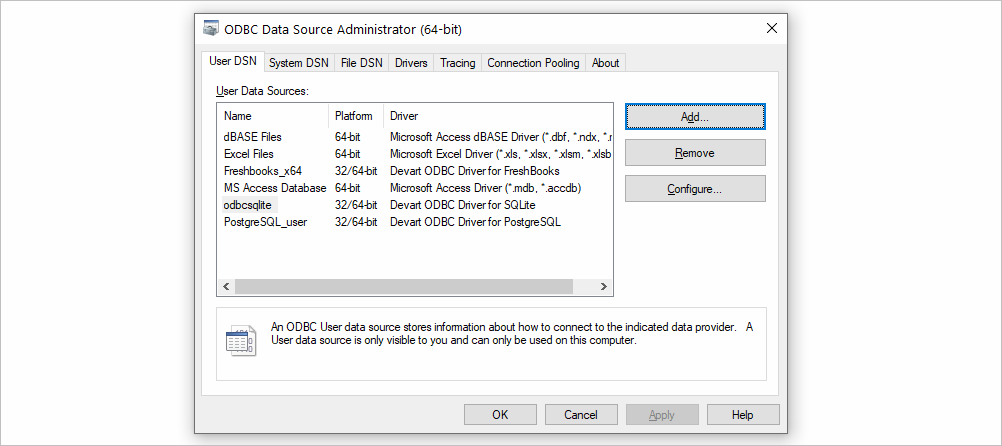

OdbcCmd.CommandText = "Select * From Sales"ĭim OdbcReader As Odbc.OdbcDataReader = OdbcCmd.ExecuteReader 'In the CommandText, the table name is the name of the file minus the extension: Add("STATISTICS", 0) 'For the dBASE driver, determines whether table size statistics are approximated.ĭim OdbcConn As New Odbc.OdbcConnection(connSB.ToString) 'The number of background threads for the engine to use. Add("CollatingSequence", "ASCII") 'can be: ASCII (the default) or International. 'My experience is that this tag does not work unless the application is running 'Tag would be better named "IgnoreDeleted" Add("FIL", "dBase 5.0") 'File type dBase III, dBase IV, or dBase 5 Add("DefaultDir", AppDir) 'Path to dbase files Add("DRIVER", "Microsoft dBase Driver (*.dbf)") 'see: Initializing the dBASE Database Driver 'these parameters are called "Connection String Attributes"

'Open Database Connectivity (ODBC) DSN-Less Connectionĭim connSB As New Odbc.OdbcConnectionStringBuilder() 'My dBase files are in the application folderĭim AppDir As String = My. Private Sub Form1_Load(ByVal sender As System.Object, ByVal e As System.EventArgs) Handles MyBase.Load Delete records are not deleted from the file until in is "packed". I cover handling deleted records in the "dbf" because this is an area that can cause those that need to access them quite a bit of headaches. The simplest/most flexible for "dbf" is the visual foxpro driver. Personally, I would use the ACE driver, but to each their own. Since you started with OBDC and wanted info on that, that section is quite long. Here is an example that shows four methods to access a "dbf" file.


 0 kommentar(er)
0 kommentar(er)
